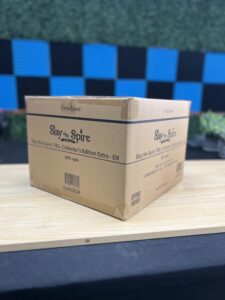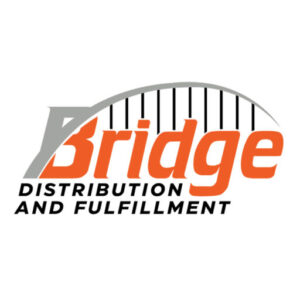There’s a misconception that, in the board game industry, fulfillment for a crowd-funded product is as simple as ‘putting things in a box’. While this simplicity may seem obvious to many, in fact, anyone who has ever worked in logistics, shipping, and fulfillment knows that the process is anything but ‘simple’. And as many first-time publishers learn, the financial cost of the fulfillment side of the project can be a shock. This is compounded by the fact that these costs usually come at the end of a successful project, and can seem to eat at a diminishing bottom line.
For some publishers, cutting margins to reduce the impact of fulfillment is a financial necessity, and already written into the plan. Others may decide to tackle the challenge themselves; we’ve all seen the social media posts of garages and living rooms packed wall-to-ceiling with boxes awaiting their homes. However, there is a middle ground between the two, and a lot of that ground is built during the design process.
In future articles, I’ll talk about how to avoid surprise costs in manufacturing and creation, but for this article, I’m focused on what steps can be taken at the production level that result in a better ‘bottom line’ once the game hits your market. Many of these ideas are not new to the industry, but they may not be apparent to anyone who hasn’t published and fulfilled a game.
In example, the recently fulfilled Slay the Spire board game, from Contention Games, was backed by nearly thirty-thousand fans. While this is a huge success, and not a target many games will even dream of, it gives us an example of how a little change can go a long way. As the game was finalizing production in China, I worked with the Contention team on staging the fulfillment side of things; even at faster-than-normal speeds, the size and complexity of the project meant it would take a month for fulfillment, at least. We looked at several opportunities on ways the fulfillment process could be sped up, and ultimately, reduce the overall cost to the publisher with less work needed on the ground.

The publishers and I noticed that the majority of orders were the core game, plus several smaller items, each that did not add substantial weight or dimensions to the package. However, traditionally, each game would need to be unboxed, then re-boxed with the correct expansion content. This necessitated several ‘touches’ by the fulfillment team: unboxing and staging product, building new boxes, repackaging games, and finally sealing and shipping the package.
By looking at the measurements of each product, our team suggested that the core game be packaged ‘ready to ship’ (sent from manufacturing with the appropriate impact protection, box size, etc) to reduce the amount of time it took to fulfill core-only orders. Next, I looked at the size of each of the add-in items, and recommended that the manufacturer create a custom box size that contained a second, smaller box above the game that would be left empty. This greatly streamlined the packing process, as now, each game just had to be opened, items placed inside, and then labeled for shipping. With this change, each order took a fraction of its original time, which meant the publisher was paying less, and the orders were going out more quickly to satisfied gamers.
Pre-packaging ‘all in’ orders at the manufacturer does add a cost to the overall order, however, any reputable fulfillment center will be happy to quote out the project without that change. While it may not feel great to be spending more up front before the game has even landed in its market, the overall savings and general speed of the project really do add up. Almost every manufacturer we’ve worked with can offer some sort of ready-to-ship packaging, so publishers, don’t be afraid to ask! When your game is finally delivered and you’ve got enough capital to start working on the expansion, you’ll be glad you thought about this step in the beginning.
